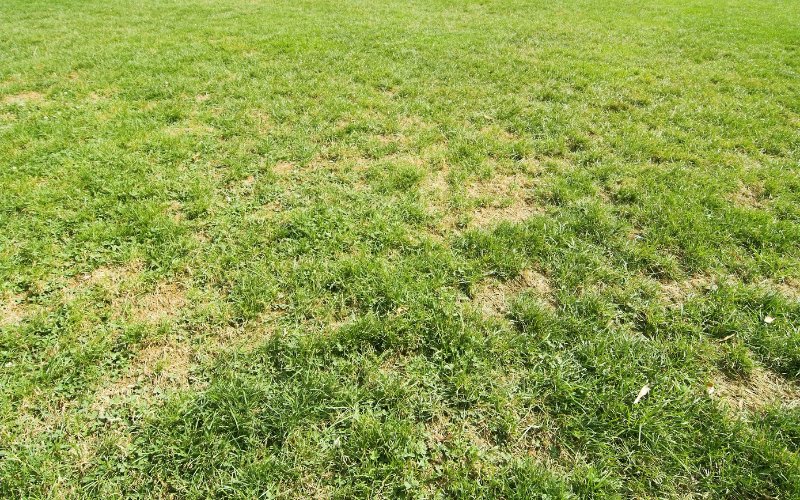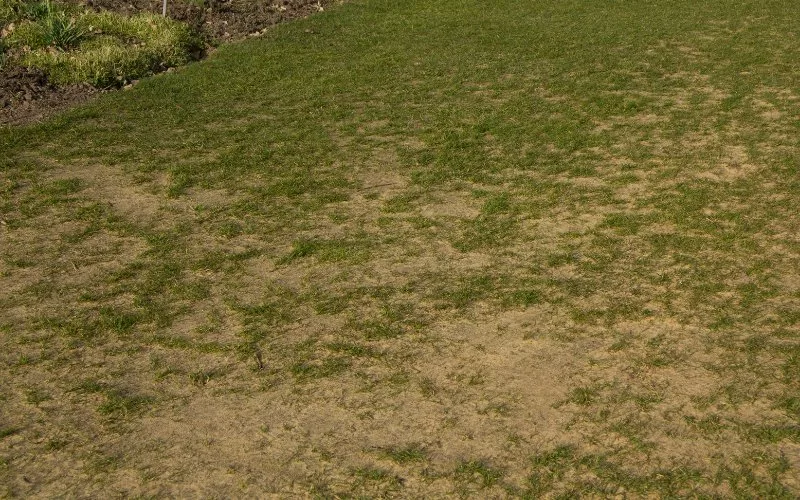When planting grass, it is important to know how far apart to place the grass plants. Some grasses will grow to fill in spaces while others never do. Here are some guidelines as to which grass spreads and which grass does not.

Does Grass Spread?
Yes, grass spreads. Some grasses spread quickly while others take years to spread. In general, plants that spread by rhizomes and stolons spread quickly, while bunch grass spreads more slowly.
How Does Grass Spread?
Below are some ways grass spreads.
Tillers
Tillers are the upright stem of a grass. Tillers grow from a crown, which is where the roots and shoots meet. Tillers are the parts of the grass that gets mowed. Grass that grows up instead of out takes longer to spread.
Rhizomes
Rhizomes are stems that grow just under the soil surface and go out instead of up. At each node of the rhizome, roots grow down, and shoots grow up. Each plant is genetically identical to the parent plant. The advantage of growing horizontally is it protects the grass from defoliation. Kentucky bluegrass is a good example of this method of spreading.
Stolons
Stolons are horizontal stems that grow on top of the ground. Similar to rhizomes, a new plant can grow at each node. That plant is genetically identical to the mother plant. St. Augustine and Buffalo grass are examples of this method of spreading.
Rhizomes and Stolons
Some grasses spread through both rhizomes and stolons. They tend to be aggressive and will not only fill in empty spaces but will grow over other species of plants. Bermuda grass and Zoysia grass are examples of this kind of spread. Bermuda grass is infamous for taking over flower beds using both these types of stems.
Bunch Grass
Bunch grass spreads differently. Each plant will grow many tillers from its crown. The clump becomes wider and wider. This is a very inefficient way for a grass to spread, and empty spots usually have to be seeded to fill them with grass. Ryegrass is a clumping grass.
Common Grass Types and How They Spread
Below I’ve put together a table with some of the more common grass types, along with the method by which they spread.
| Grass Type | Method of Spreading |
|---|---|
| Bahia | Rhizomes and Stolons |
| Bent | Stolons |
| Bermuda | Rhizomes and Stolons |
| Buffalo | Stolons |
| Centipede | Stolons |
| Fescue | Bunch grass |
| Kentucky Bluegrass | Rhizomes |
| Ryegrass | Bunch grass |
| St. Augustine | Rhizomes and Stolons |
| Zoysia grass | Rhizomes and Stolons |
Will Grass Spread To Cover Bald Spots?
It depends on the type of grass you have. If you have fescue or ryegrass, it will not grow to cover bald spots. The other grasses listed in the table above will spread and cover the bald spot if it was caused by pests or disease once that problem is resolved. If the bald spot is in the shade, St. Augustine tolerates part shade, but no grass will grow in full shade. Other environmental problems that affect whether the grass will spread include lots of weeds in the grass, frequent flooding, and too high a salt content in the soil.
Reasons Your Grass Won’t Spread
Grass doesn’t always spread. There are several different reasons your grass might not spread.
- The grass is a bunch grass.
- It doesn’t get enough sun.
- It does not have enough water.
- It gets too much water.
- It needs to be fertilized.
- You cut more than 1/3 of the grass blade when you mow.
- The area needs to be de-thatched.
- The area needs to be aerated.

What Makes Grass Spread Faster?
There are ways to make grass spread faster. Generally, the better care you take of the grass, the faster it spreads. If you have a bare spot, make sure you remove the dead grass before trying to get the living grass to spread into and cover it.
Soil test
Get a separate soil test for each bare spot you are trying to get grass to cover. This will tell you what nutrients are present and what needs to be added.
Watering
Water new grass frequently while it is getting established. Switch to weekly deep watering as the grass puts down roots to encourage those roots to grow down deep. This makes the grass more drought resistant. In both cases, grass should get an inch of water each week.
Fertilizer
Fertilize newly established lawns grown from seed about 4-6 weeks after germination. Fertilize new lawns grown from sod, plugs, or sprigs 6 weeks after planting. Put out the nutrients recommended by the soil test. Overfertilization is worse than not fertilizing because it weakens the grass, so don’t overdo it.
Mowing
Check out best practices in Does Cutting Grass Make It Spread?
Most grass spreads. There are several different things you can do to encourage it to spread. If you care for your lawn properly, your grass should grow into a thick, lush lawn.


Leave a Reply